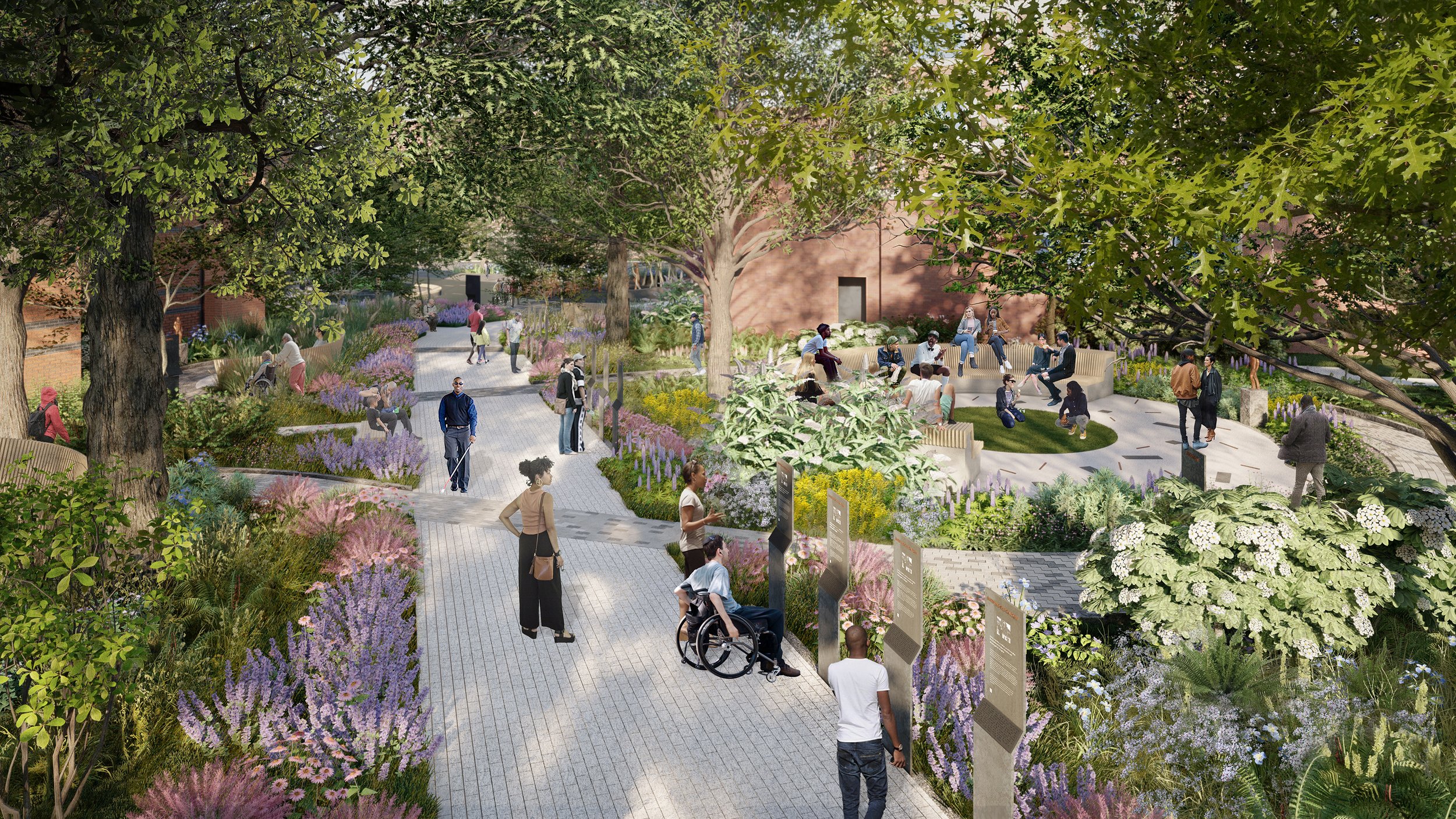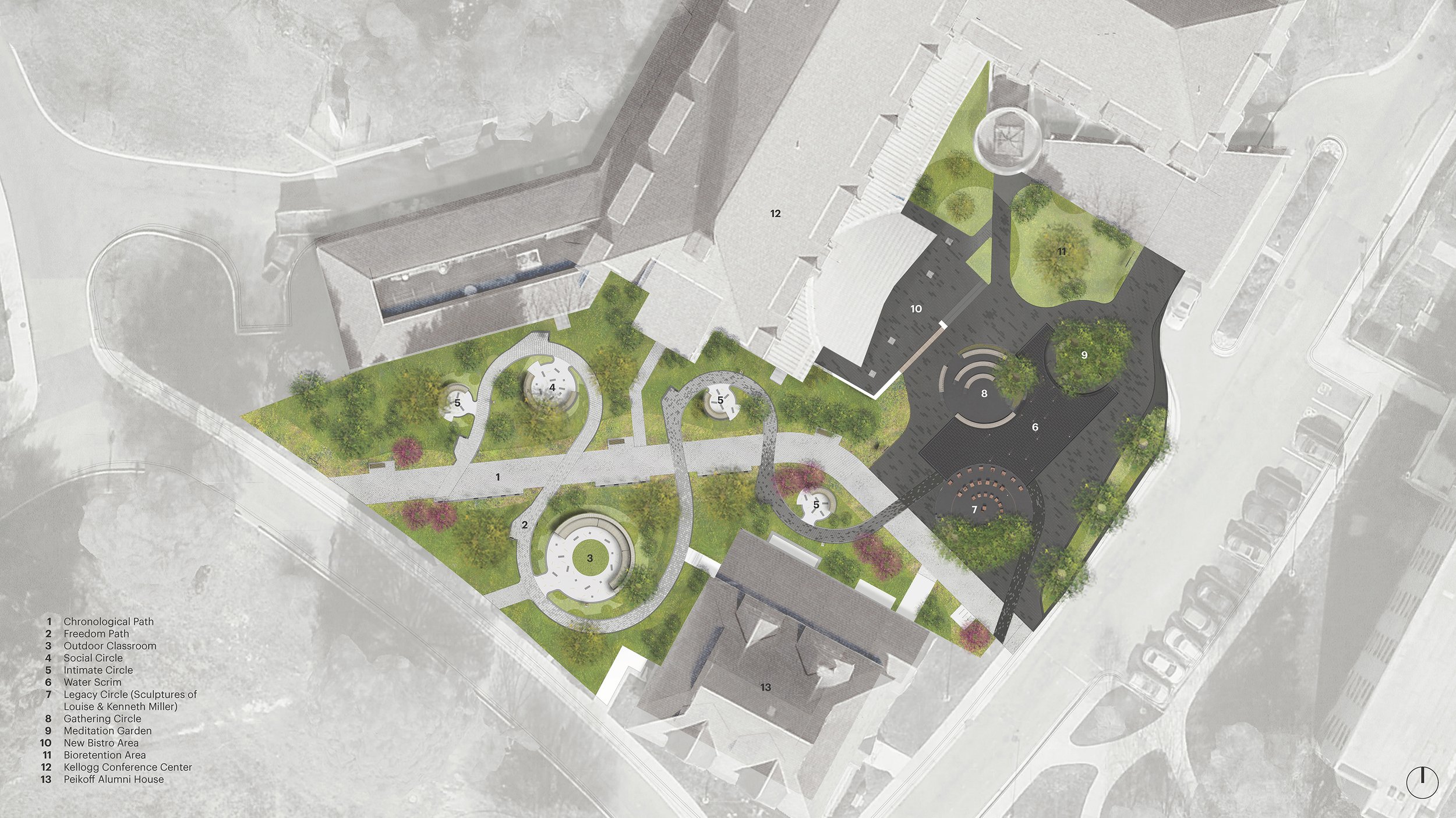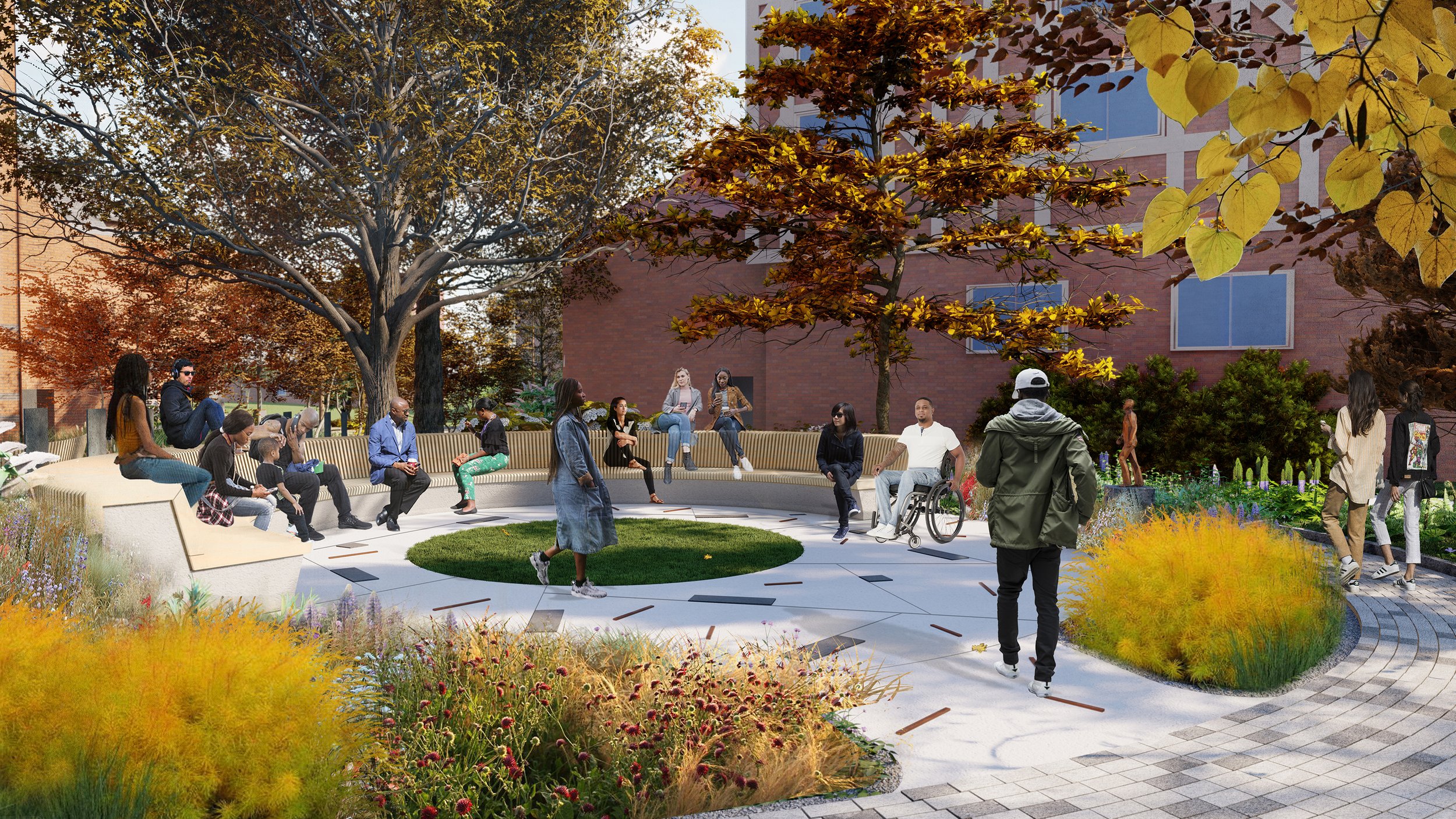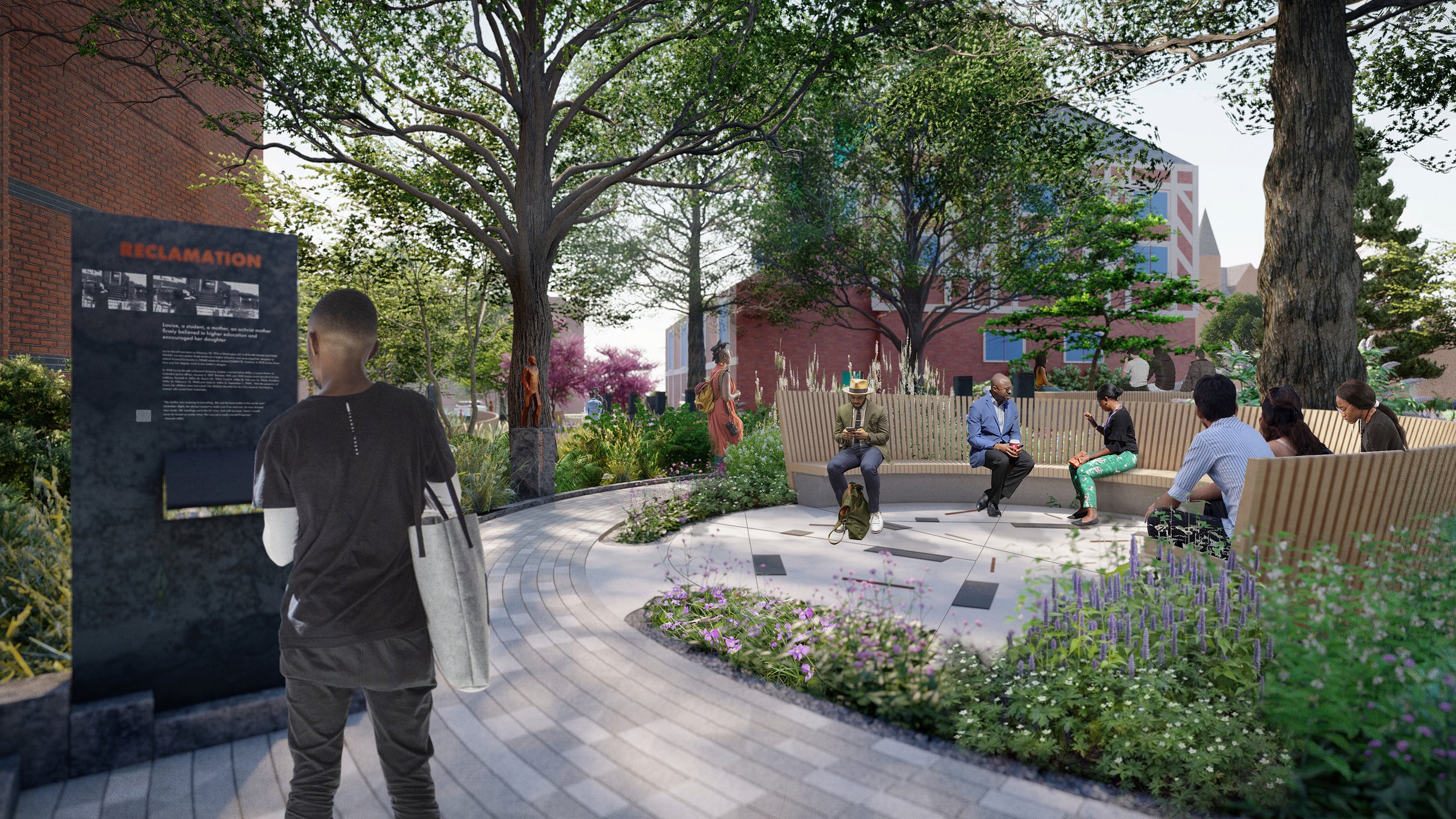LOUISE B. MILLER MEMORIAL + FREEDOM GARDEN
The mission of the Louise B. Miller Memorial and Freedom Garden is to create an abundant, Black Deaf centric space. Gallaudet University is committed to confronting its past and leading a national reckoning with the destructive legacy of segregation through a memorial that both witnesses and honors the Black Deaf community’s fight for educational justice in America.
In 1952, Louise B. Miller, the mother of a deaf child, and other parents filed a class action suit against the Washington, D.C. Board of Education of for the right of Black Deaf children including Mrs. Miller’s son, Kenneth, to attend the Kendall School for the Deaf on the campus of Gallaudet College. The resulting victory in Miller v. Board, which pierced the Plessy v. Ferguson doctrine of “separate but equal,” was a watershed moment in Black Deaf history as well as the American civil rights movement. In ways that are significant yet historically overlooked, Miller v. Board, its mandate to create the Kendall School Division II for the Negroes on campus, and the school’s 24 Black students and four teachers helped lay the foundations of a civil rights movement that resulted in Brown v. Board, and over the next decade, methodically dismantled educational segregation in America.
Location: Washington, D.C.
Client: Gallaudet University
Status: In Design
Area: 23,400 SF
Team: TEN x TEN, MASS Design Group, Tillett Lighting, Fluidity, AMT Engineering, Mueller Engineering, IDEA Center, SiteWorks
The Memorial and Freedom Garden forms a serene and sensory-rich environment to spatialize the enduring impact of Louise Miller and the Kendall School Division II. The Memorial itself, a rectangular scrim of water that hosts three circular sensory rooms - a meditation room, a gathering space, and a legacy room, is embraced by a dynamic sensory garden. A winding freedom path snakes its way through the garden to create an experience that embodies the fight for freedom and connects visitors to five additional sensory rooms of various sizes: three small reflective rooms, a small gathering room, and a large outdoor classroom. Together, the memorial, freedom path and sensory rooms create a platform to activate storytelling and activism. Throughout the garden interpretive panels are integrated to chronicle Louise’s fight for justice, to honor the momentous impact of her struggle. and to uplift the stories of the Black Deaf experience.




